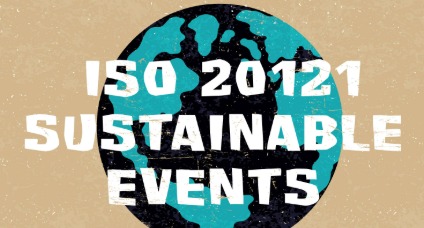In today’s environmentally conscious world, sustainability has become a vital part of business operations across industries. The event management sector, which often involves significant resource consumption and waste generation, is no exception. From international conferences and music festivals to local community fairs, every event leaves behind an environmental and social footprint. Recognizing the need to make events more sustainable, the International Organization for Standardization (ISO) developed ISO 20121:2012 – Event Sustainability Management Systems.
This standard provides a structured framework that enables organizations to integrate sustainability principles into all stages of event management — from planning and execution to evaluation and continuous improvement.
What is ISO 20121:2012?
ISO 20121:2012 is an international standard for sustainable event management, designed to help organizations minimize negative social, economic, and environmental impacts of events, while maximizing their positive contributions. It applies to any type of event — whether large or small, corporate or cultural, private or public.
Developed after the success of the London 2012 Olympic and Paralympic Games, which aimed to be one of the most sustainable sporting events in history, ISO 20121 formalizes best practices and sets out requirements for an event sustainability management system (ESMS). It is suitable for event organizers, venues, suppliers, and any entity involved in the event supply chain.
The standard’s flexible framework allows it to be adapted to various organizational sizes and types, ensuring inclusivity across the industry.
Objectives of ISO 20121
The overarching goal of ISO 20121 is to make sustainability a core element of event management. Specifically, the standard aims to:
-
Reduce environmental impact – by managing energy use, minimizing waste, and reducing carbon emissions.
-
Promote social responsibility – by ensuring inclusivity, fair labor practices, and positive community engagement.
-
Encourage economic sustainability – by supporting local suppliers, ensuring cost efficiency, and delivering long-term value.
-
Enhance governance and transparency – by improving communication with stakeholders and ensuring accountability.
-
Drive continuous improvement – by monitoring performance and learning from each event to make future ones better.
Core Principles of ISO 20121
The ISO 20121 standard is built around three key pillars of sustainability:
1. Environmental Stewardship
Events often generate significant waste, consume vast amounts of energy, and contribute to pollution. ISO 20121 helps organizations adopt responsible environmental practices, such as reducing single-use plastics, optimizing transportation logistics, and sourcing renewable energy.
2. Social Inclusion
Sustainable events go beyond environmental efforts — they must also be inclusive and socially beneficial. The standard encourages engagement with local communities, fair employment opportunities, accessibility for people with disabilities, and respect for cultural diversity.
3. Economic Prosperity
Sustainability also means ensuring the financial health and value creation of the event ecosystem. ISO 20121 promotes the use of local suppliers, cost-effective resource management, and responsible budgeting that benefits both the organizer and the community.
Benefits of ISO 20121 Certification
Implementing ISO 20121 brings numerous tangible and intangible benefits to event organizers, sponsors, attendees, and communities.
1. Strengthened Reputation and Brand Image
Organizations certified to ISO 20121 are recognized as leaders in sustainable practices. This builds trust and credibility with stakeholders, clients, and the public. A sustainable reputation can also attract sponsors and attendees who prioritize environmental and ethical values.
2. Improved Operational Efficiency
By identifying inefficiencies and minimizing waste, ISO 20121 helps reduce operational costs. Efficient resource management — from energy use to logistics — saves money while reducing environmental impact.
3. Enhanced Stakeholder Relationships
Engaging stakeholders such as clients, suppliers, employees, and the local community is central to ISO 20121. This leads to better collaboration, stronger partnerships, and increased satisfaction for all parties involved.
4. Legal and Regulatory Compliance
The standard supports compliance with environmental and social regulations, reducing the risk of legal issues or penalties. It also helps organizations stay ahead of emerging sustainability laws and expectations.
5. Competitive Advantage
With sustainability becoming a key differentiator in the market, ISO 20121 certification gives organizations a competitive edge. Many government tenders and corporate contracts now prefer — or even require — certified sustainable event partners.
6. Contribution to Global Sustainability Goals
Implementing ISO 20121 aligns with the United Nations Sustainable Development Goals (SDGs), particularly those related to responsible consumption (Goal 12), climate action (Goal 13), and partnerships (Goal 17).
Steps to Implement ISO 20121
Implementing ISO 20121 requires a systematic approach that integrates sustainability principles into all aspects of event planning and delivery. Below is a general roadmap for organizations:
1. Understanding and Commitment
Management must first understand the importance of sustainability and commit to implementing the ISO 20121 framework. Leadership support is essential for success.
2. Assessing Impacts and Risks
Identify the social, environmental, and economic impacts associated with the event — such as waste generation, transportation, community effects, and resource consumption.
3. Setting Objectives and Targets
Establish measurable goals to reduce negative impacts and enhance positive outcomes. For example, setting targets for waste reduction, carbon offsetting, or local supplier participation.
4. Engaging Stakeholders
Consult and collaborate with all stakeholders — employees, suppliers, sponsors, local communities, and attendees — to ensure inclusivity and shared responsibility.
5. Developing a Management System
Create and document policies, procedures, and responsibilities to integrate sustainability throughout event processes.
6. Monitoring and Evaluation
Track performance against set objectives using key performance indicators (KPIs). Collect data before, during, and after events to evaluate progress.
7. Continuous Improvement
Review outcomes and feedback to identify areas for enhancement in future events. ISO 20121 promotes a culture of ongoing improvement.
Real-World Application of ISO 20121
Many global events have adopted ISO 20121 principles to improve sustainability. For example:
-
The London 2012 Olympic Games was the first major event to implement the standard, achieving remarkable reductions in waste and carbon emissions.
-
Copenhagen International Fashion Fair used ISO 20121 to manage sustainability in sourcing and logistics, setting a new benchmark for fashion events.
-
Major music festivals and conferences worldwide have followed suit, proving that sustainability and creativity can coexist.
- These examples demonstrate how the standard is transforming the event industry by making responsible management the new norm.
Conclusion
ISO 20121:2012 is more than just a certification; it represents a commitment to responsible and sustainable event management. By implementing this standard, organizations showcase their dedication to minimizing environmental harm, promoting social equity, and ensuring economic balance.
As audiences, sponsors, and governments increasingly demand accountability and sustainability, adopting ISO 20121 can help organizations stay ahead of the curve. It ensures that events not only entertain and inspire but also contribute positively to society and the planet.
In essence, ISO 20121 empowers the event industry to make a difference — creating experiences that are memorable, meaningful, and sustainable.







